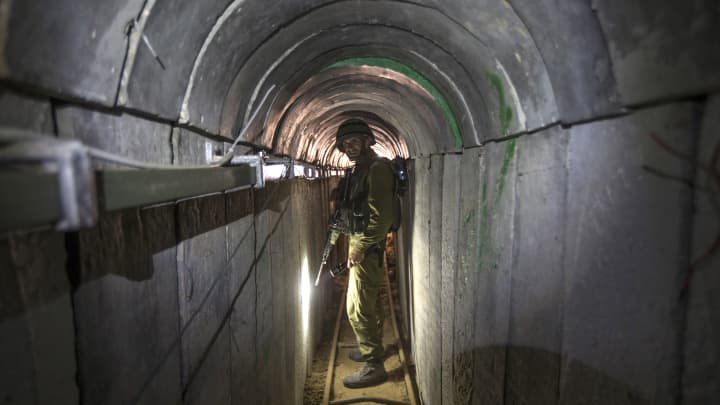
on the border of Gaza following Saturday's surprise attack inside of Israel, but their orders are still unclear.
What is clear, however – according to Israeli troops who've fought inside Gaza before – any invasion is going to be difficult, dangerous and bloody.
Gaza – with more than 15,000 people per each of its 139 square miles – is one of the most in the world. Inside military circles in Israel, there are two Gazas to contend with: Upper Gaza, which is everything above ground, and lower Gaza, where bombs and drones can't get to, and sophisticated satellites can't see .
"You have babies and terrorists in the same house," said one reserve soldier who declined to give his name due to his role in Israel's security service. The soldier has fought in Gaza several times over the last 15 years.
Israel believes Hamas is trying to draw soldiers into territory the militant group knows much better. Officials expect the tunnels and ground throughout the area to be booby-trapped with explosives.
"Nobody really knows what's underground," said Harel Chorev, a Palestinian historian at Tel Aviv University's Moshe Dayan Center for Middle East and African Studies.
Israel's intelligence community believes much of the money and material the world gave to the people of Gaza to rebuild after previous wars has been and reinvested in the elaborate system of tunnels and bunkers.
"I don't see Israeli soldiers being able to storm these tunnels," Chorev said. Instead he believes they will try and locate them and find ways to "smoke them out."
Despite Israel's constant air attacks on Gaza, Hamas has still been able to fire rockets at Israeli cities five days into the fighting. In many cases those rockets are hidden underground on tracks so they can be moved within the tunnel network, frustrating Israel's air force. The estimated 150 Israeli hostages seized in Hamas' initial invasion Saturday are also believed to be hidden in those tunnels, making any possible rescue effort extremely difficult, if not impossible.
Hamas' tunnels have frightened Israeli soldiers and civilians for years. They were weaponized around 2006, when members of Hamas used the system to sneak into Israel to kill two soldiers, wound two others and capture soldier Gilad Shalit. He was held captive underground for more than five years and ultimately returned to Israel in a swap for 1,000 prisoners in Israeli jails.
Over the last decade, nervous Israelis have reported hearing digging underground. The army has tried to come up with means to discover and destroy the tunnels on both sides of the border, with only limited success.
Israel's army knows the has electrical generators, intelligence rooms and supplies for Hamas' underground army. Nobody in Israel seems to know how long the tunnels are but they know it's a big network often euphemistically called "Gaza's Metro."
"We know they're waiting for us," said the soldier who previously fought in Gaza. "And as bad as Gaza is above ground, underground is much worse."




